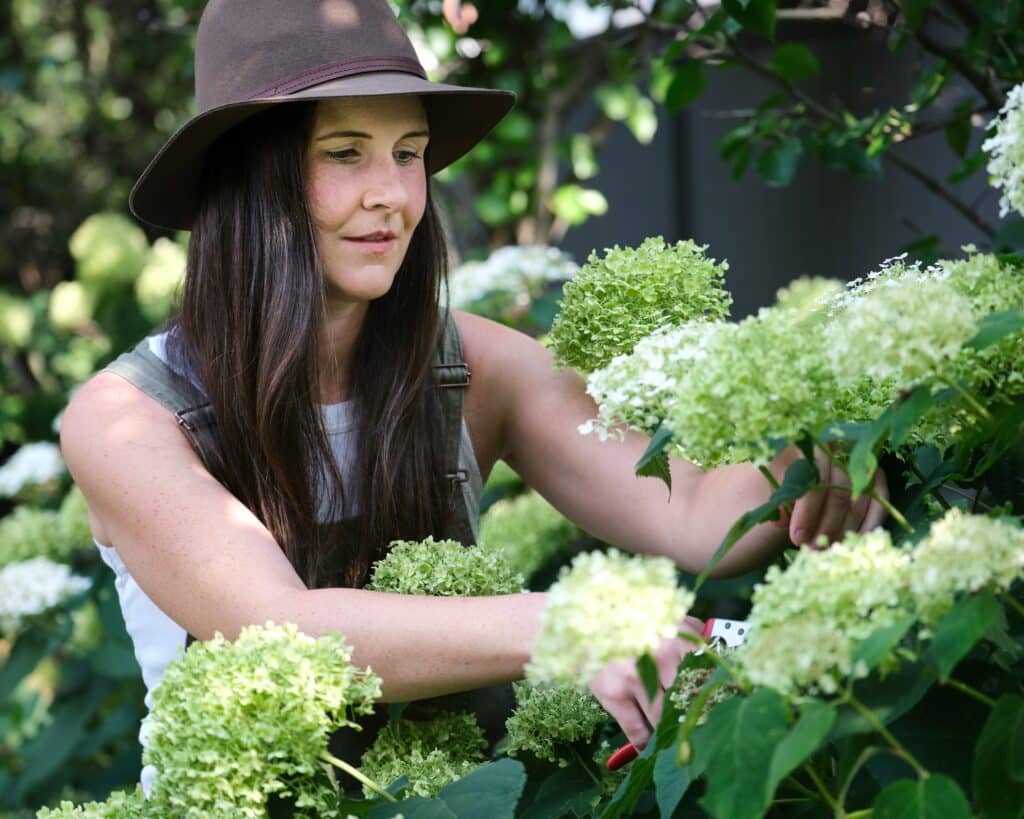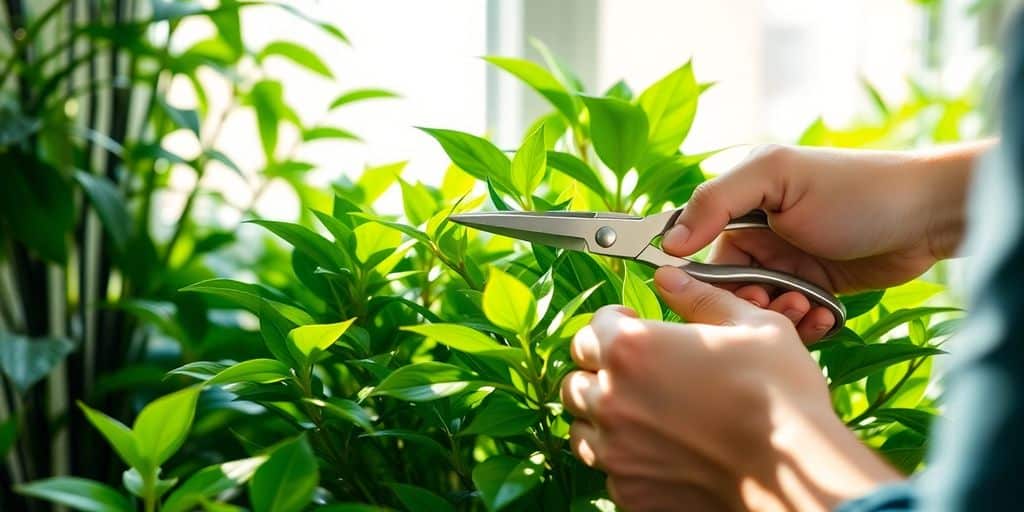How to properly prune your houseplants is a skill every plant parent should learn for healthier, fuller growth. A few well-placed cuts can make all the difference in how your plant looks and thrives. It’s not just maintenance—it’s part of plant care success.
Pruning helps remove dead or damaged leaves, encourages new growth, and keeps your plant looking its best. But timing and technique matter. Done right, pruning can refresh your plant without causing stress.
Even beginners can master pruning with a bit of guidance and confidence. You don’t need fancy tools—just a sharp pair of scissors and a gentle touch. Once you learn when and where to cut, it becomes second nature.
Curious how to get started? This article offers expert tips to help you prune effectively and support long-term plant health. Let’s give your houseplants the boost they deserve.
Key takeaways
- Pruning helps promote healthy growth by removing dead or damaged leaves.
- Using the right tools and knowing where to cut can make a big difference in your plant’s health.
- Timing your pruning during the growing season leads to better results.
Understanding the importance of pruning for houseplants

Okay, so, pruning houseplants. I know it might sound scary – like you’re gonna mess something up – but trust me, it’s a good thing! It’s like giving your plant a haircut, but with actual benefits. I used to be super hesitant, but now I’m all about it. Let’s get into why it’s so important.
Encouraging healthy growth
Pruning is a great way to encourage your plants to grow fuller and bushier. When you trim away the ends, it signals the plant to send out new shoots from the sides. Think of it like this: you’re redirecting the plant’s energy.
Instead of focusing on that one long stem, it starts putting effort into creating more leaves and branches. I’ve seen some of my leggy plants totally transform after a good prune. It’s pretty cool, actually.
Preventing disease and pests
This is a big one. Getting rid of dead or dying leaves and stems isn’t just for looks. It actually helps prevent diseases from taking hold. Those dead bits can become breeding grounds for nasty stuff.
Plus, pruning allows for better air circulation around the plant, which makes it harder for pests to settle in. I had a bad experience with spider mites once, and now I’m super diligent about pruning to keep those buggers away. It’s all about keeping your green buddies healthy and happy!
Techniques for effective pruning

Alright, so you’re ready to get your hands dirty and start pruning. Here’s what I’ve learned over the years to make sure you’re doing it right. It’s not rocket science, but a little know-how goes a long way.
Choosing the right tools
Okay, first things first: you gotta have the right tools. Using dull or incorrect tools can actually harm your plants, and nobody wants that. Clean, sharp tools are your best friends here. I remember using some old, rusty shears once, and it was a disaster – the cuts were ragged, and the plant looked stressed for weeks!
Here’s a quick rundown:
- Bypass Pruners: These are like scissors and are great for smaller stems (less than an inch thick). I use these the most for general shaping and snipping.
- Loppers: Think of these as heavy-duty pruners. They have long handles for extra leverage, perfect for thicker branches that your pruners can’t handle.
- Pruning Saw: For those really thick branches, a pruning saw is the way to go. Get one with a comfortable grip – you’ll thank me later.
And remember, always clean your tools before and after each use to prevent spreading any diseases. A little rubbing alcohol does the trick.
Identifying the best cutting spots
This is where things get a little more interesting. You can’t just go willy-nilly and start chopping away. You need to know where to make your cuts to encourage healthy growth. I usually look for a few key things:
- Nodes: These are the points on the stem where new leaves or branches will grow. Cut just above a node to encourage growth in that direction. It’s like telling the plant, “Hey, grow this way!”
- Dead or Diseased Growth: Obvious, right? Get rid of anything that’s dead, dying, or looks diseased. Cut back to healthy growth to prevent the problem from spreading. I usually burn the diseased parts, just to be extra safe.
- Crossing Branches: If you see branches that are rubbing against each other, prune one of them. This prevents damage and allows for better airflow.
Cut at the appropriate spot
You want to cut back to a growing spot, such as a leaf node or where another branch forks off from the branch, or down to the soil line. I usually make my cuts at a slight angle, away from the bud. This helps water run off and prevents rot. And always make sure your cuts are clean – no jagged edges!
Timing your pruning for optimal results
Recognizing the growing season
Okay, so when’s the best time to grab those pruning shears? Well, it really boils down to understanding your plant’s growing season. Most houseplants benefit from pruning either in late winter or early spring, right before they kick into high gear with new growth.
This gives them a head start and encourages them to fill out nicely. Think of it as giving them a little pep talk before the big race. I’ve found that timing it just right makes a huge difference in how full and happy my plants look.
Adjusting for seasonal changes
Now, just because late winter/early spring is generally good doesn’t mean you can totally ignore the rest of the year. For example, you can usually snip off dead or dying leaves or flowers whenever you see them – that’s just good housekeeping.
But I try to avoid major pruning in late summer or fall. The new growth that comes after might not be strong enough to handle the winter, and the cuts might not heal properly, leaving your plant vulnerable to diseases. It’s all about finding that sweet spot. Here’s a quick guide:
- Late Winter/Early Spring: Ideal for most pruning.
- Summer: Mostly deadheading (removing spent flowers).
- Late Summer/Fall: Avoid major pruning if possible.
Final thoughts on pruning your houseplants
So, there you have it! Pruning your houseplants isn’t just about making them look good; it’s about keeping them healthy and happy. Remember to use clean tools, cut at the right spots, and pay attention to the timing. It might seem a bit daunting at first, but with a little practice, you’ll get the hang of it.
Just think of it as giving your plants a little haircut to help them grow better. And hey, don’t forget to check for pests while you’re at it! Your plants will thank you for the extra care, and you’ll enjoy a thriving indoor garden. Happy pruning!
Frequently asked questions
Why is pruning important for houseplants?
Pruning helps your houseplants grow better by removing dead leaves and stems. This allows the plant to focus its energy on healthy parts, which can lead to more growth and fewer pests.
When should I prune my houseplants?
The best time to prune most houseplants is during their growing season, which is usually in spring and summer. Avoid heavy pruning in the fall and winter when plants are resting.
What tools do I need for pruning?
You should use sharp scissors or pruning shears to make clean cuts. It’s also a good idea to clean your tools before and after use to prevent spreading diseases.
